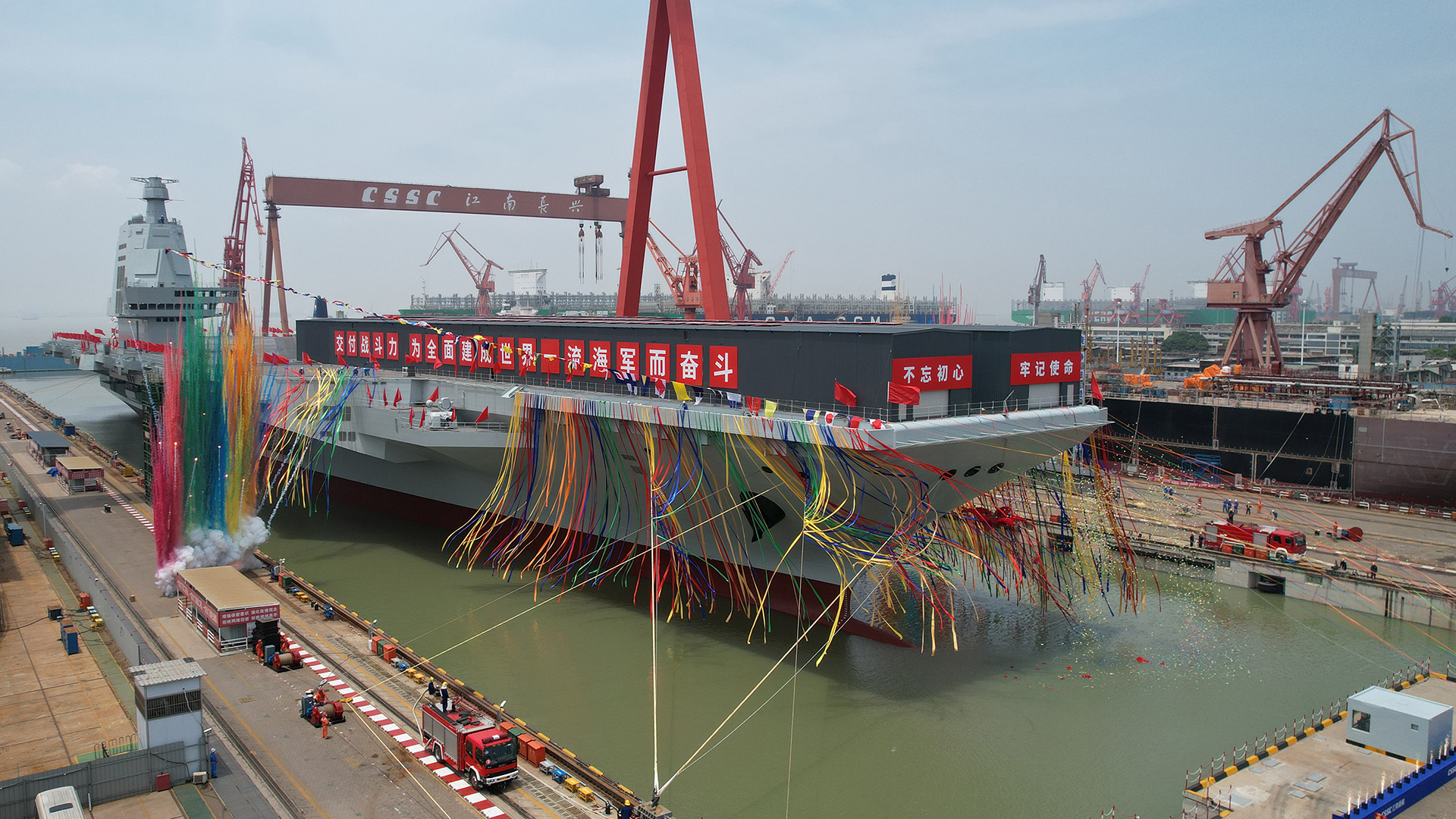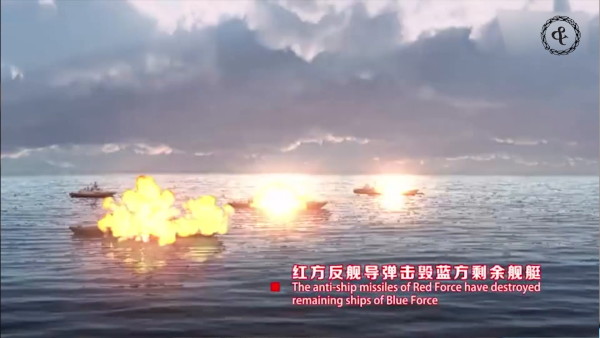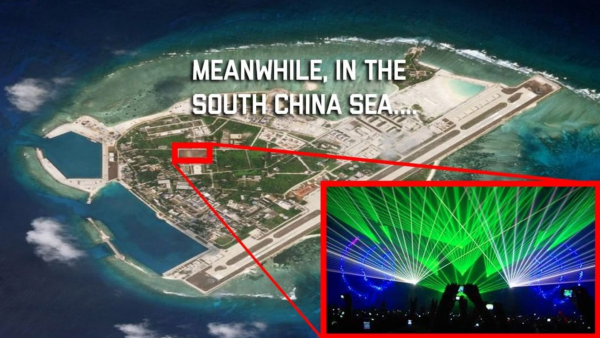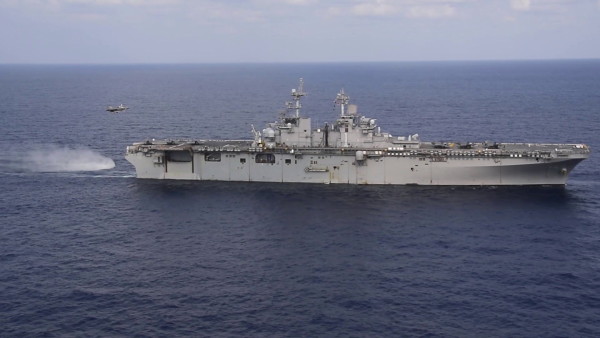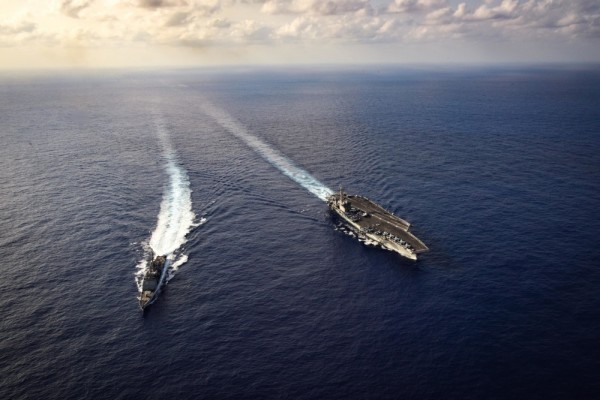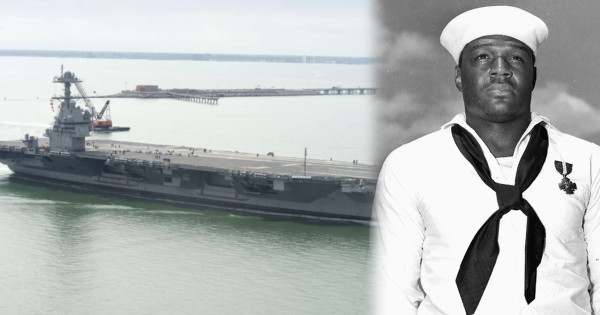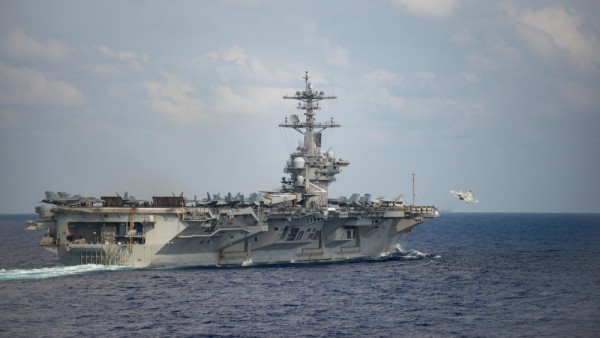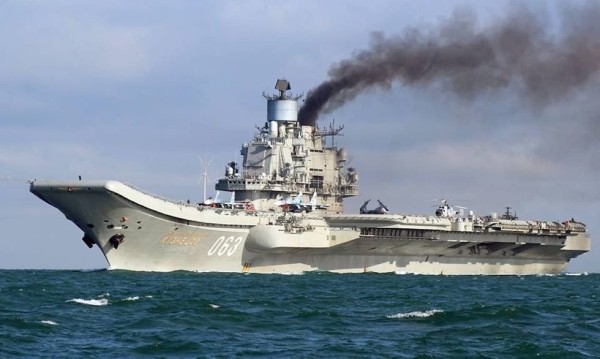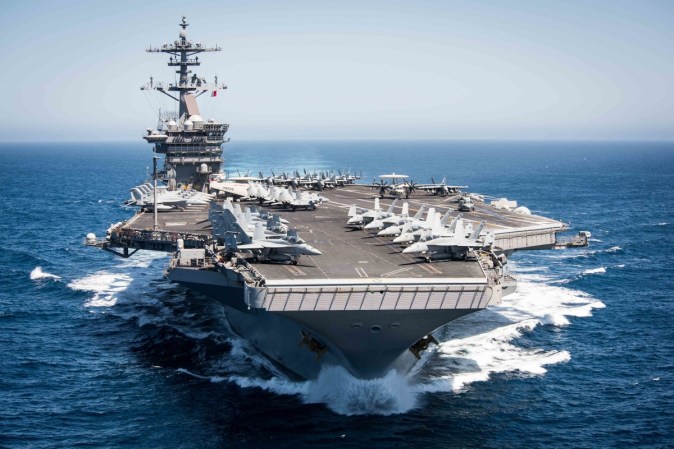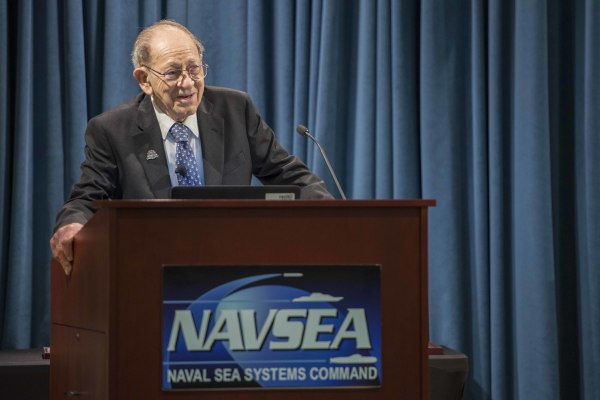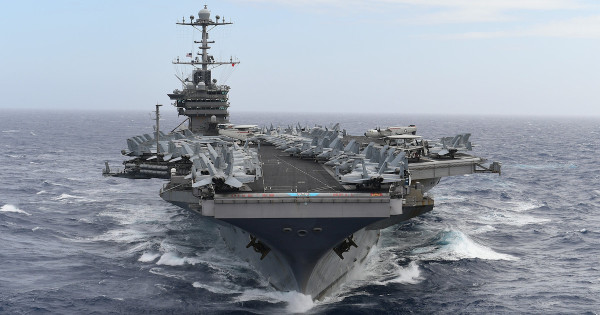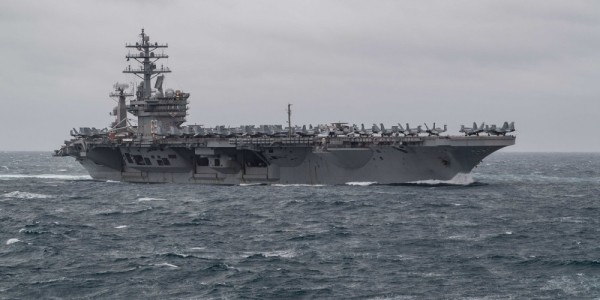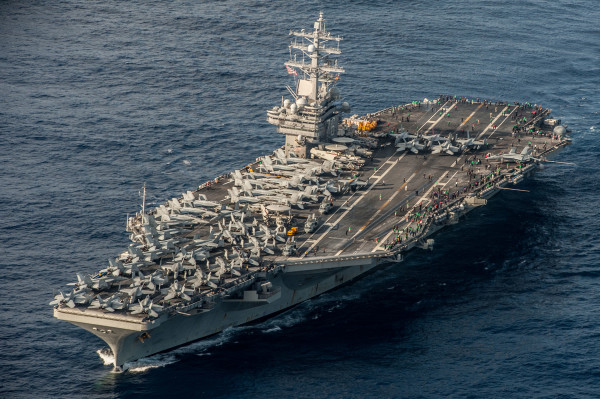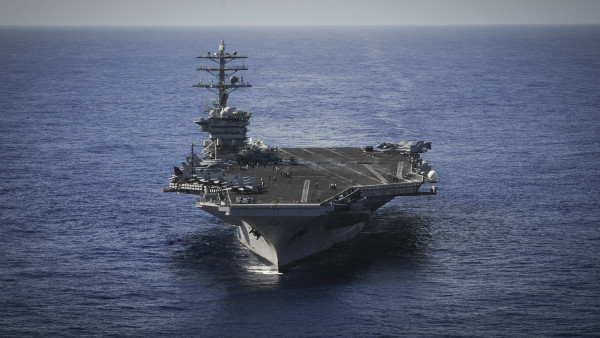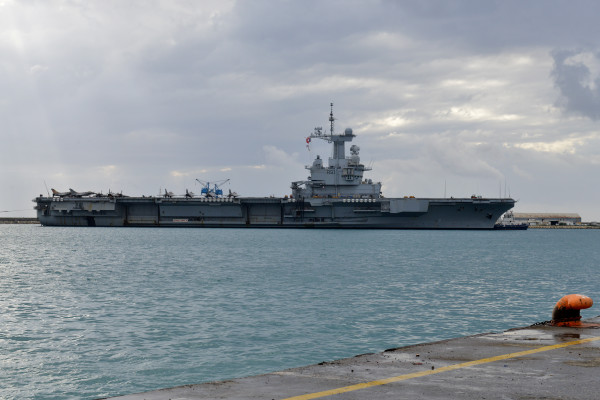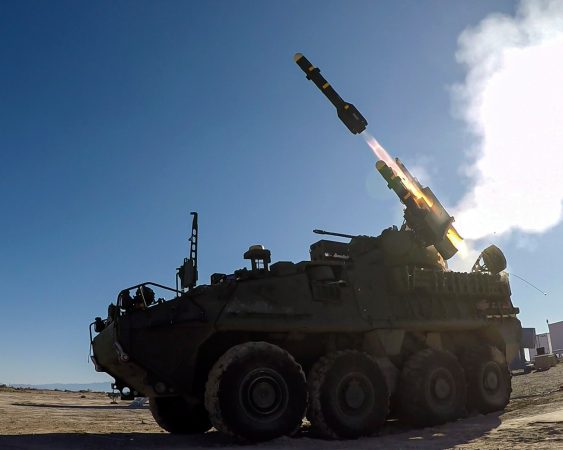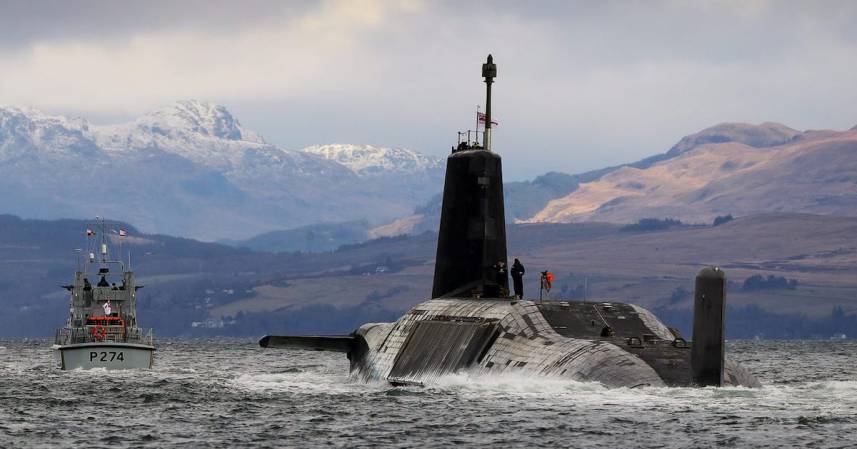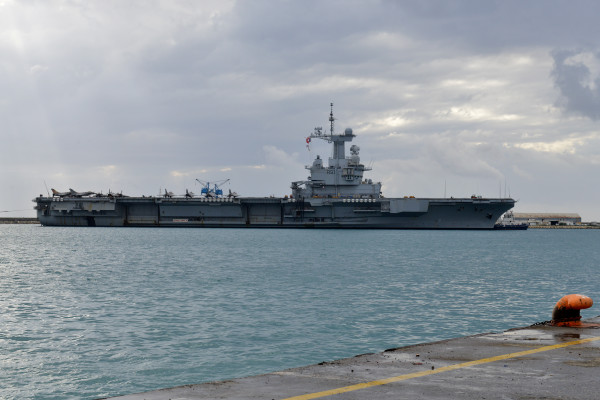The U.S military has several arrows in its quiver should it need to sink China’s third and newest aircraft carrier, the Fujian, which launched on Friday.
China is boasting that the Fujian was built with the latest technology, which reportedly includes the same type of electromagnetic catapult that the U.S. Navy struggled to get to work on its newest aircraft carrier, the USS Gerald R. Ford.
The launch of the Fujian comes shortly after China’s foreign ministry spokesman claimed recently that the Taiwan Strait belongs to China and he argued there is no legal basis to call the strait “international waters.” Since U.S. warships occasionally transit the Taiwan Strait, a confrontation between the U.S. and Chinese navies is always a possibility.

But the fact that the Fujian comes equipped with the latest bells and whistles does not make it immune from attacks from above and below the water. The Russians learned this lesson the hard way when their cruiser Moskva, the flagship of their Black Sea Fleet, sank after being hit by two Ukrainian Neptune anti-ship missiles.
Subscribe to Task & Purpose Today. Get the latest in military news, entertainment, and gear in your inbox daily.
Unless the Fujian features “a super-secret, amazing ship defense capability,” it will be just as vulnerable to the weapons that the U.S. military can bring to bear on the other ships in the People’s Liberation Army Navy’s fleet, said retired Marine Lt. Col. Dakota Wood, a defense expert at the conservative Heritage Foundation think tank in Washington, D.C.
“In general terms: New aircraft carrier, old aircraft carrier, it’s still an aircraft carrier,” Wood told Task & Purpose. “It’s a ship that floats in the water and is subject to being targeted by maritime patrol aircraft with anti-ship cruise missiles or a submarine.”
The U.S. Navy’s arsenal of anti-ship missiles includes the Harpoon, a sea-skimming cruise missile guided by the Global Positioning System that can be launched by ships as well as Navy and Air Force aircraft. Both the United States and Denmark have provided Ukraine with Harpoon missiles, which the Ukrainians claim to have used to strike a Russian rescue vessel in the Black Sea near Snake Island.

Meanwhile, Boeing was awarded an $73 million contract last year to fit the Long Range Anti-Ship Missile, which can reportedly hit targets hundreds of miles away, onto Navy P-8A Poseidon maritime patrol aircraft. And the Navy has already begun putting Naval Strike Missiles on some of its Independence-variant Littoral Combat Ships. The missiles can carry a 500-pound warhead more than 100 nautical miles.
Cruise missiles can render enemy aircraft carriers unable to carry out its missions by destroying aircraft on the flight deck, and that is known as a “mission kill,” said retired Navy Capt. Jan van Tol, a naval warfare expert with the Center for Strategic and Budgetary Assessments think tank in Washington, D.C.
Submarines are far more effective at sinking aircraft carriers and other surface ships as opposed to mission killing them, van Tol told Task & Purpose.
“The shockwave through the water can cause very serious damage,” van Tol said. “For example, for a destroyer- or cruiser-sized ships, they can break the keels. Torpedoes – and for that matter, mines – are ship-killers.”
In 1982, the British nuclear-powered submarine HMS Conqueror torpedoed and sank the ARA General Belgrano, an Argentine light cruiser that it bought from the United States. Another British submarine tracked but did not sink an Argentine aircraft carrier during the Falklands War.
Defense Department spokesman Todd Breasseale declined to say exactly which capabilities the U.S. military has that could be used to sink the Fujian.
“We do not comment on operational or intelligence matters,” Breasseale told Task & Purpose. “As the Secretary has repeatedly stated (most recently, directly to Minister Wei during the two leaders’ bilateral discussion at the Shangri-La dialog in Singapore), competition does not have to lead to conflict. That is why we prioritize future bilateral work on strategic risk reduction and enhancing communication during crises.”
While the Fujian is vulnerable to anti-ship weapons – as are U.S. navy aircraft carriers – the Chinese military believes it can protect its newest carrier with its large arsenal of land-based missiles, said James Holmes, the J. C. Wylie Chair of Maritime Strategy at the U.S. Naval War College in Newport, Rhode Island.
“China thinks about using the whole force, not just the navy,” said Holmes, who stressed that he was not speaking on behalf of the U.S. Navy or the U.S. government. “All likely battlegrounds Beijing cares about lie under the shadow of shore-based anti-ship missiles and missile-armed aircraft, along with missile-armed subs and surface patrol craft that can fan out offshore to do us harm before we can get to those battlegrounds. The carrier fleet fits into that overall architecture.”
“As long as it operates under the protective cover provided by shore fire support, Chinese commanders can hope our fleet never comes within range to cut loose with our own anti-ship weaponry,” Holmes continued. “And that’s not necessarily a forlorn hope considering how we’re struggling to keep up our inventory of attack boats. We have the best in the world, but not enough of them to impose blanket coverage of a massive volume of water like the Western Pacific.”
That means it is not important if China’s latest aircraft carrier is a match for its U.S. counterparts, he said. What would matter in a war with China would be which side could marshal its joint force to bring as much combat power to the fight when and where it would matter.
“If the PLA [People’s Liberation Army] can do that in the Western Pacific, it doesn’t matter whether a unit of firepower comes from a carrier aircraft, a surface warship, or a land-based missile or aircraft,” Holmes said.
UPDATE: This story was updated on June 17 with comments from Defense Department spokesman Todd Breasseale.
The latest on Task & Purpose
- US Navy aircraft carriers may be useless in a war with China
- A helicopter flown in Afghanistan is now a military couple’s camper
- We salute the Navy captain who took 700 sailors to see ‘Top Gun: Maverick’
- These photos capture what life is really like in the military
- Hollywood has spent $16 million training Chris Pratt for war
Want to write for Task & Purpose? Click here. Or check out the latest stories on our homepage.

